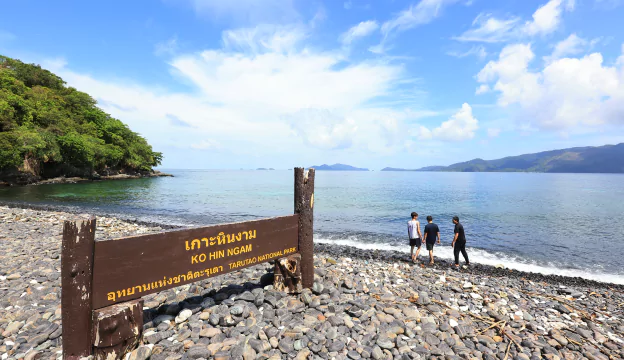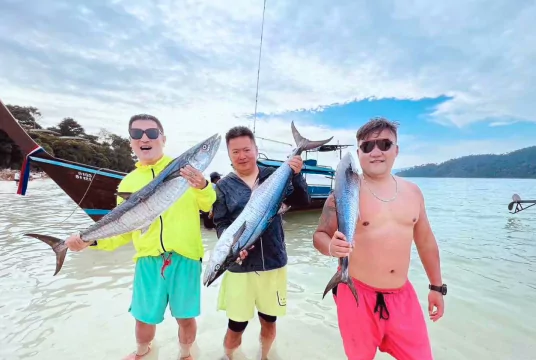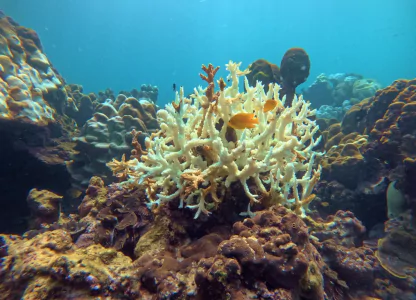Koh Hin Ngam is the first Global Geopark in Thailand and the fifth in ASEAN. The beach is covered with black stones of various sizes, but each stone shares a smooth, rounded shape. When exposed to water and sunlight, these stones become beautifully glossy.
The formation of these stones is linked to geological processes. They originate from the southern part of the island, where the currents have exposed “hornfels” rocks with multiple fracture lines. These fractured stones are broken into angular pieces by wave action. As the current flows along the shoreline and around the pebble shoals, it continually wears down the stones, smoothing and rounding them over time until they accumulate at the pebble shoals.
Due to the beauty of these stones, some visitors, both Thai and foreign, have been known to secretly take them home. However, there are stories of these individuals feeling uneasy and eventually returning the stones. Though this is a personal belief, there have been reports of foreign tourists returning the stones or sending them back by mail due to discomfort.

Interestingly, there are serious warning signs in three languages—Thai, English, and Chinese—that read: “Curse of the Tarutao Spirit: Anyone who dares to take stones from this island will face various misfortunes. They will not return home, will encounter accidents, lose their jobs, and face endless disasters…”




